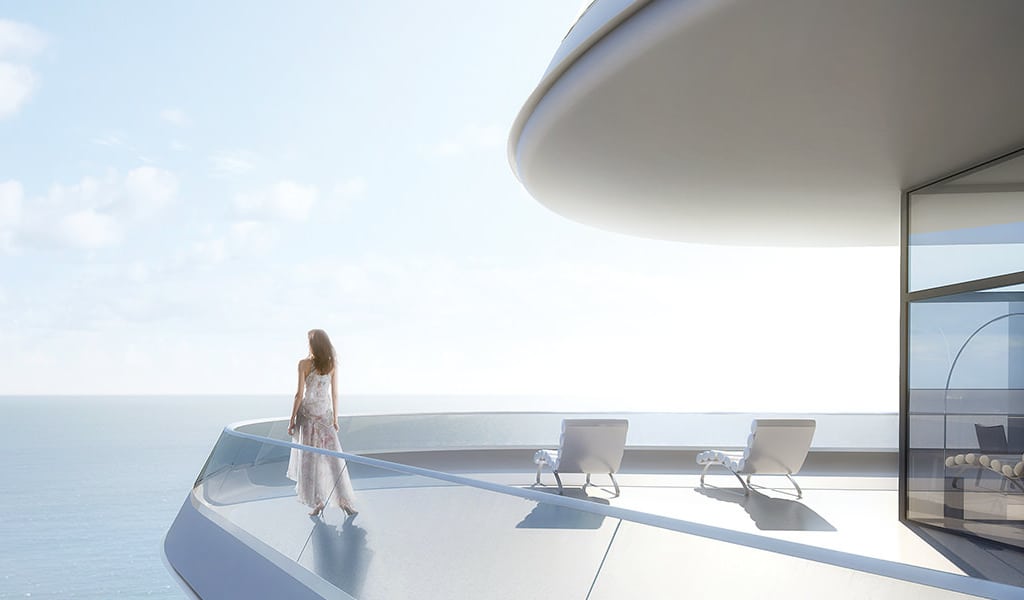Skift Take
The Faena Districts in Miami and Buenos Aires shift the idea of lifestyle hotels as community hubs into a new era by incorporating the community into their master development plans.
The marquee celebrity hotelier at the second annual LE Miami hospitality trade show in South Beach last month was Alan Faena, who is recreating in Miami the success he had rebuilding an entire neighborhood in Buenos Aires.
Dressed in his trademark all-white suit and white fedora, Faena sat with Guy Dittrich, ex-UK managing director for Design Hotels, for a discussion about what Dittrich called “the unstoppable merging of lifestyle and hospitality.”
This is a story about a very expensive kind of creative expression, versus the latest, sassiest lifestyle hotel. Faena prefers to transform abandoned, or underserved neighborhoods into urban hospitality ecosystems with fashionable hotels, contemporary cultural venues, pricey nightlife and a not immodest flair for theatricality.
“The best place to create magic is working with buildings, because working with buildings is one of the most fantastic [ways] how you can express yourself,” said Faena at LE Miami. “The best way to do it is developing buildings to create neighborhoods that I can make [into] communities.”
With $300 million in assistance from the Hong Kong & Shanghai Bank, the Argentine developer and Russian American investor Len Blavatnik are spending $550 million to build the Faena District on five blocks just north of the Art Deco District in South Beach.
It incorporates a redesign by Roman & Williams, known for their work with Ace Hotels, of the retro beachfront Saxony Hotel, which the Cipriani group was reinventing when the global economy caved. Great Gatsby director Baz Luhrmann and his wife, Hollywood costume/set-designer Catherine Martin, are overseeing the interior design including the style of staff uniforms.
Adjacent to that, the residential Faena House is a newbuild condo tower designed by Foster+Partners, who put together The Shard in London, with outdoor aleros (terraces) up to 4,000 square feet. With penthouse units selling for almost $50 million, this will be the first building to open in the district early next year.
And across Collins Avenue, Rem Koolhaas and OMA architects are designing the Faena Arts Center, Bazaar and Park buildings.
Faena can afford to buy talent and “express himself” like this because of how well he succeeded in revitalizing Buenos Aires’ main port district just a few years ago.
Porteños, Puerto Madero & Rojo Tango
Locals in Buenos Aires are known as porteños, referring to people who live in port cities. Argentina’s capital was once one of the wealthiest cities in the Americas due to European cattle exports in the early 20th century passing through the busy port.
The industrial waterfront Puerto Madero district fell into decline for some “40 to 50 years” says Faena until he stepped in ten years ago and redeveloped the area. It’s anchored by the Philippe Starck-designed Faena Hotel Buenos Aires and Faena Arts Center housed in a massive repurposed flour mill. Today, Puerto Madero is the most expensive real estate in Argentina.
But you have to go back to when Faena was 19 years-old, selling jeans when they initially came into vogue following the fall of Argentina’s dictatorial military junta. The young entrepreneur eventually evolved into one of the country’s most popular fashion designers, with over 80 stores nationwide and $30 million in annual revenues.
After selling his fashion retail business, Faena moved to Uruguay to be a gardener. He eventually cultivated a sturdy hybrid that could survive close to the sea, which became to be known as the “Faena Rose.”
It is perhaps with the fashion and gardening where Faena derives his sense of drama. For example, at his hotel in Buenos Aires, you walk down one of Starck’s trademark long corridors with tall ceilings until you come to a tiny bistro-style restaurant and stage with about 50 seats.
The Rojo Tango show here is the best tango performance in the city where the dance was born, costing three times the price of most other shows. It is consistently sold out and it has drawn tens of thousands of guests to both the hotel and Puerto Madero district. A similar resident show will be in place in Miami Beach.
Speaking of his hometown during LE Miami, Faena said, “This is where I can bring the best of my city together with the best of the world together with an art center and theater… and the collaboration of people. And bringing the best minds who I think at the moment are very good interacting with me, we were going to create something that never happened in the city.”
You can get a sense of Faena’s alchemist mind by viewing the Collaboratory at the Faena House website, highlighting each of the firms putting together Miami’s newest most expensive hospitality real estate. You’ll also get a vibe of that in this video with Luhrmann.
Faena shared a few other thoughts about his views on contemporary hospitality, saying he doesn’t believe in the phrase “luxury” anymore. He prefers the idea of “simplicity,” where “magic can happen” because of simply being surrounded by the most interesting people in the most interesting settings.
That is a refrain discussed often these days about the shift in luxury toward the essential. Still, you have to live in a certain stratosphere to downplay the idea of luxury when you’re charging $700+ per night for a hotel suite. Not that Faena sees himself as a hotelier, however.
“I was not looking to become a hotelier,” he said. “I was looking to create a cultural center in general, with beds.”
Greg Oates covers hotel/tourism development and travel brand media. email/twitter
Have a confidential tip for Skift? Get in touch
Tags: miami
Photo credit: Faena House Miami Beach Faena Group
